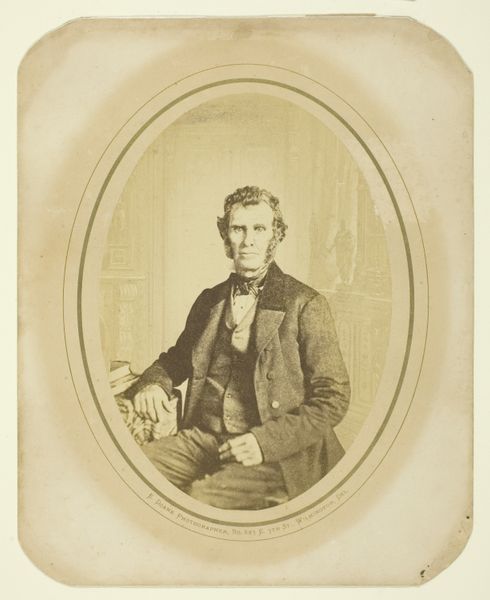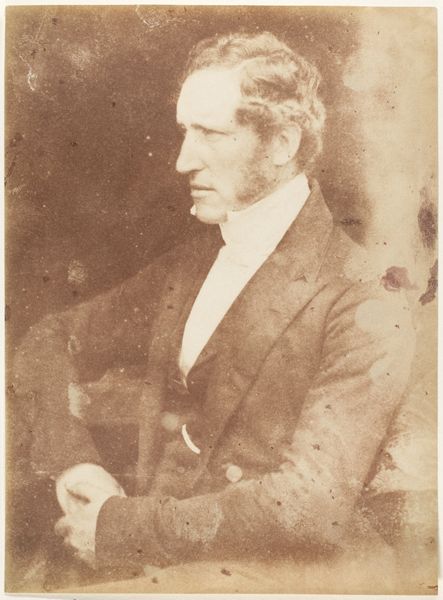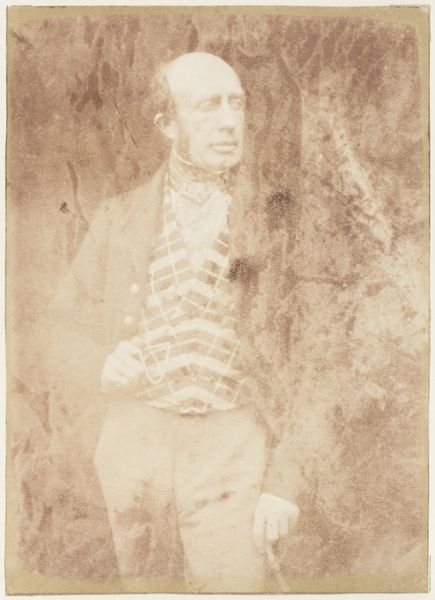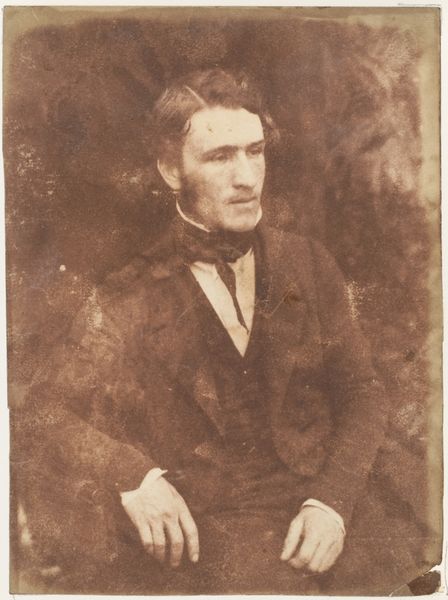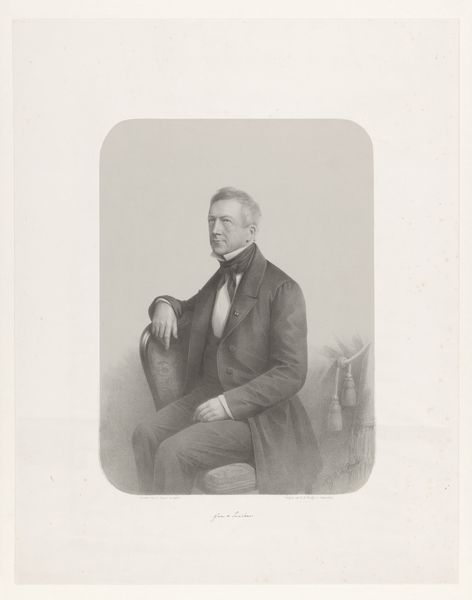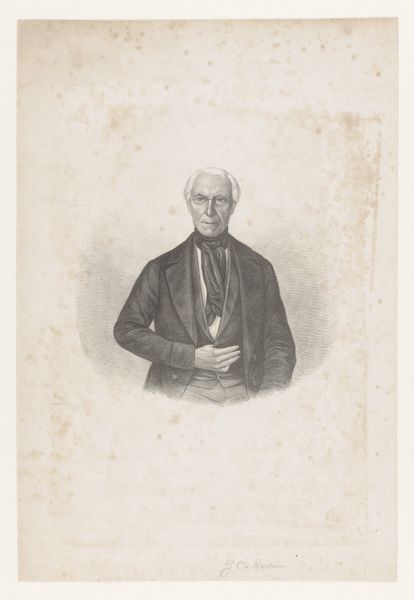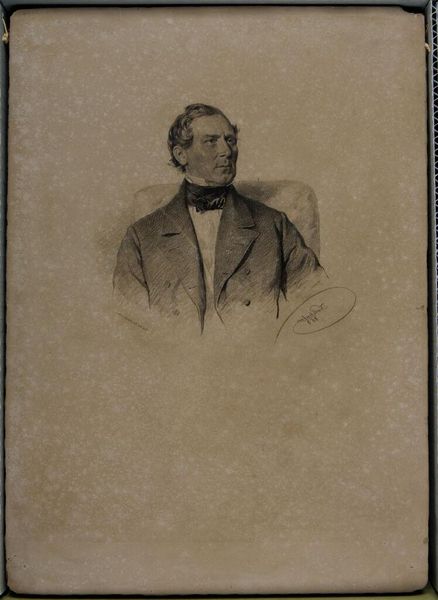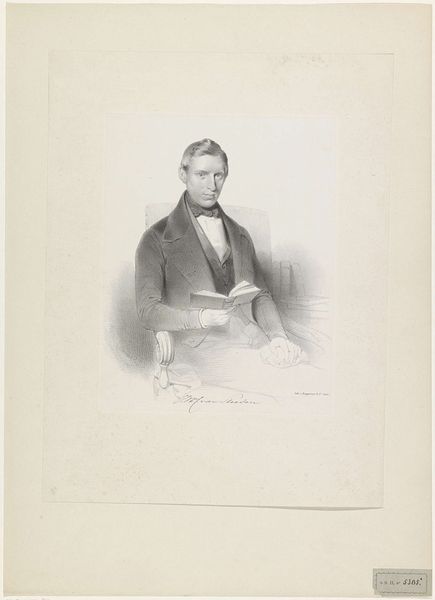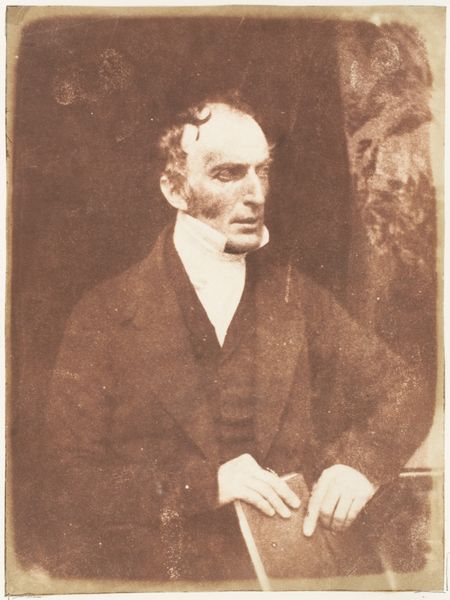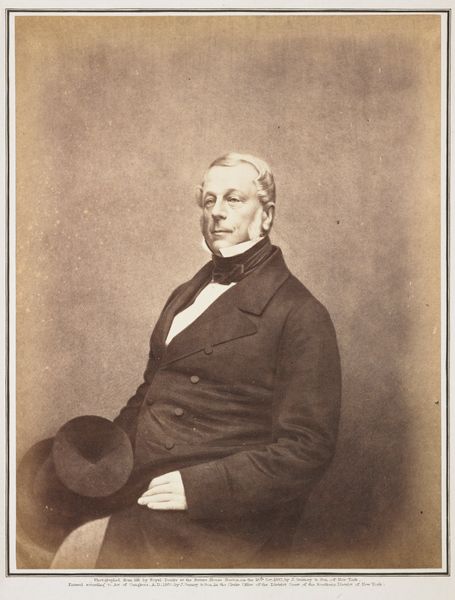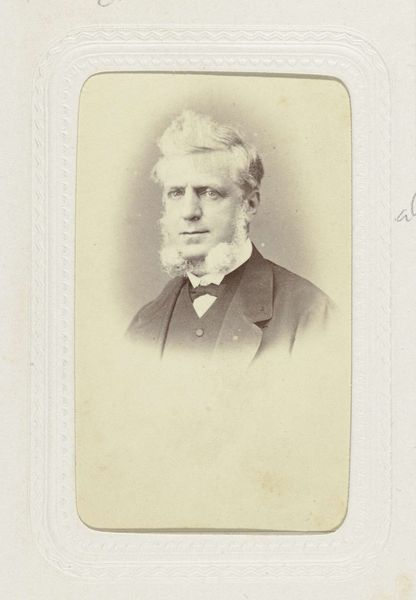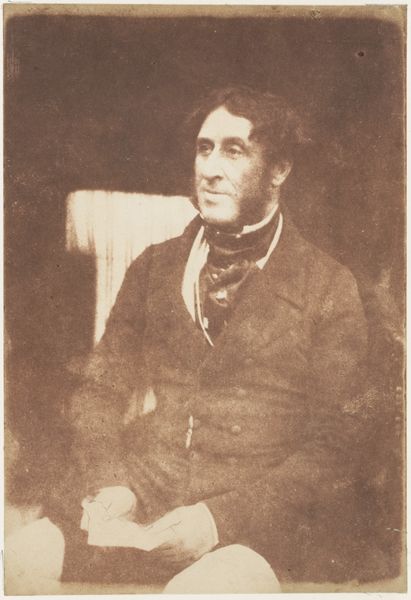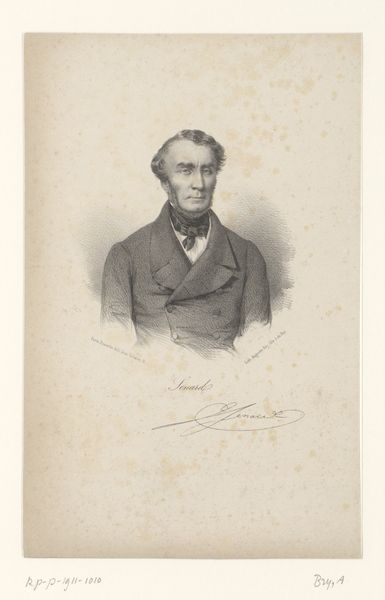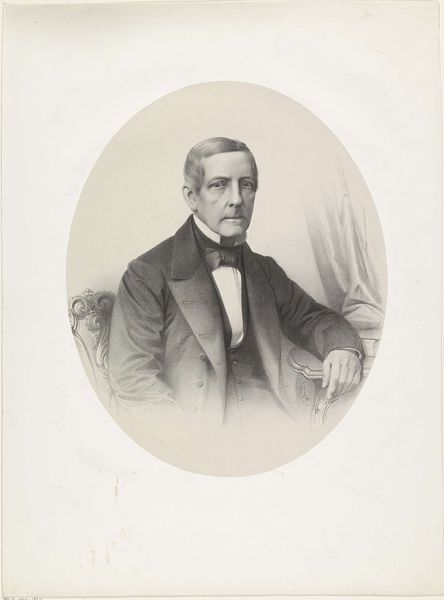
David Maitland Makgill Crichton, Rankeillour 1843 - 1847
0:00
0:00
daguerreotype, photography
#
portrait
#
still-life-photography
#
daguerreotype
#
photography
#
romanticism
#
academic-art
Copyright: Public Domain
Curator: Looking at this early photograph, titled "David Maitland Makgill Crichton, Rankeillour", by Hill and Adamson, from around 1843 to 1847, the sitter almost seems to emerge from a sepia dream. What's your immediate reaction? Editor: The first thing that strikes me is the materiality. It's a daguerreotype, right? That unique surface gives it a fragile, almost ghost-like quality. The textures in his clothing and even the backdrop seem incredibly tangible despite the soft focus. Curator: Precisely. This portrait captures a specific historical moment, doesn’t it? Here we have David Maitland Makgill Crichton, Laird of Rankeillour, a member of the Scottish elite during a period of significant social and economic upheaval. The portrait reflects anxieties about tradition versus progress. Editor: And his status is certainly encoded through his clothing; look at the cut of his coat, the careful knot of his cravat. It speaks volumes about the labor and resources required to produce and maintain that image. Also, the object he holds – a book? Is it intended to suggest he is intellectual or studious? Curator: That’s a great observation. His act of holding the book is a deliberate signal, of course, tying him to the world of learning, even suggesting enlightened leadership, but it also points towards class division, a signifier of those with access to knowledge. What’s more, the daguerreotype as a relatively new process in itself signified progress. Editor: So, it becomes a layered object. It embodies tensions of the new technology itself--between art and industry, reproduction and originality--revealing both the ambitions and the anxieties of the period. It also gives us information on work required for the photographic process at this moment. Curator: Absolutely. Early photography required great skill to handle light and chemicals to reveal an image. But photography would also go on to threaten painting, leading to changes in the whole means of visual representation. Thinking of this one portrait, it speaks to questions of social hierarchies, intellectual and cultural values. Editor: The subtle tonal range and the hint of silver in the image creates such an intimate and compelling artifact of early photography. The work truly allows the exploration of process and also the socio-economic structures, of 19th-century Scotland. Curator: Indeed. It's a piece where the interplay of artistic intention, social context, and emerging technology offers us endless food for thought.
Comments
No comments
Be the first to comment and join the conversation on the ultimate creative platform.
